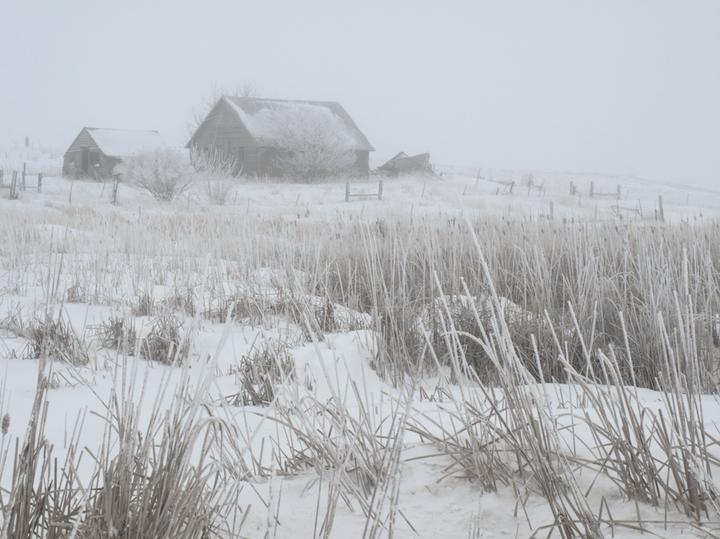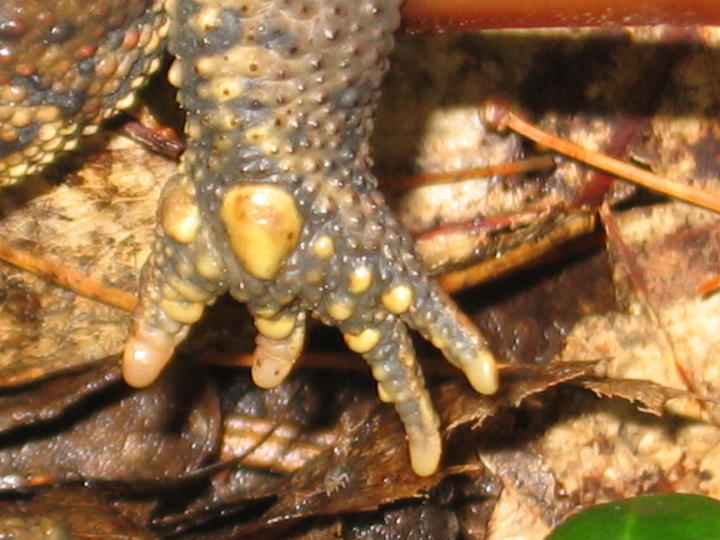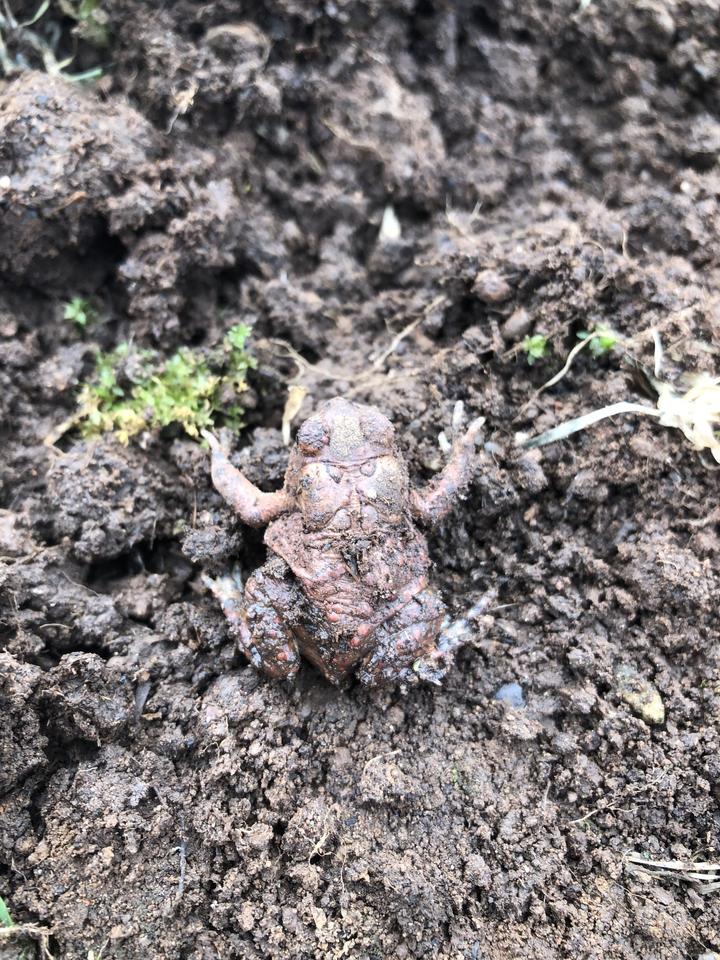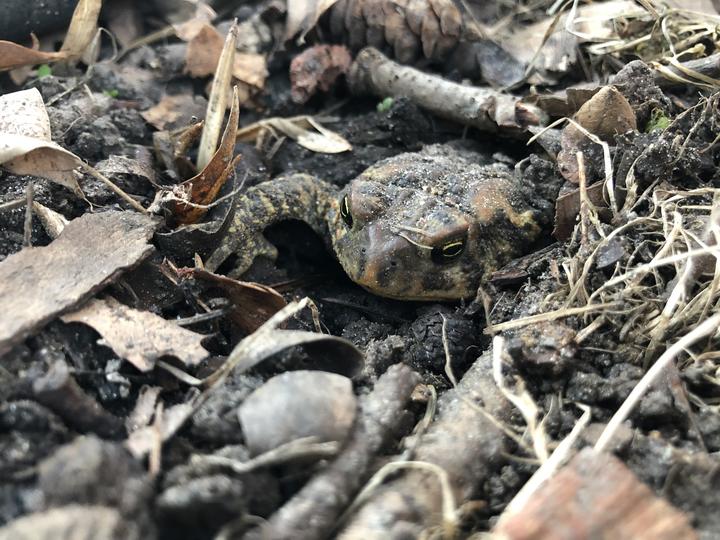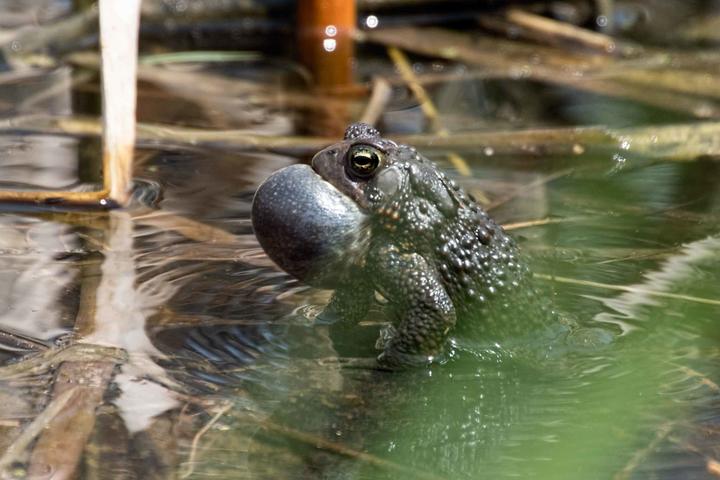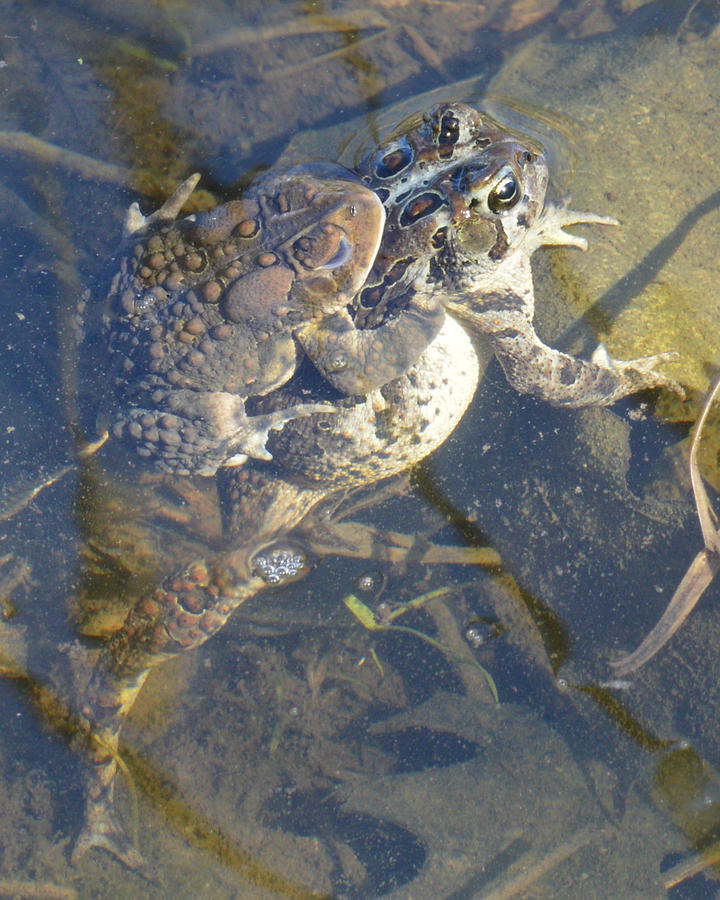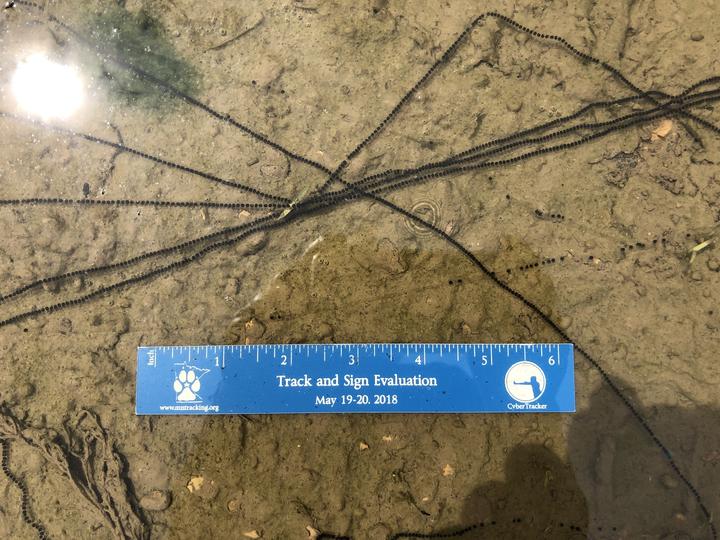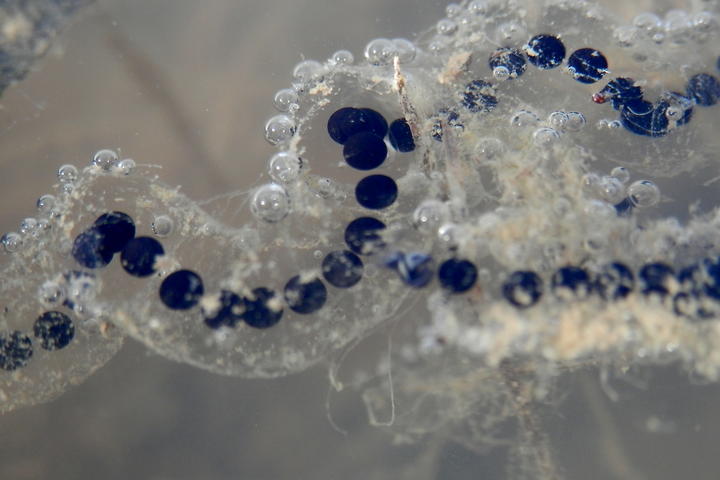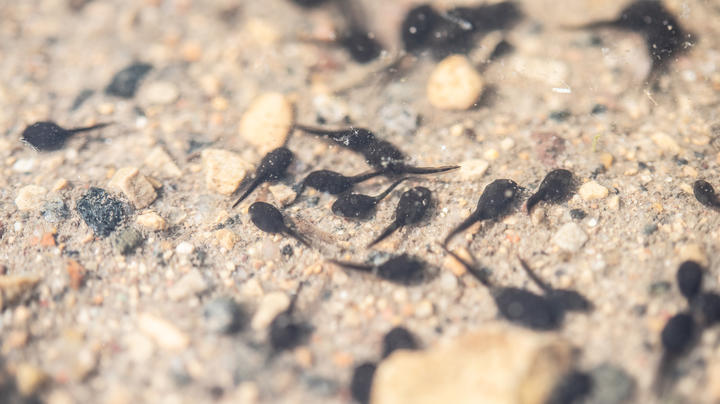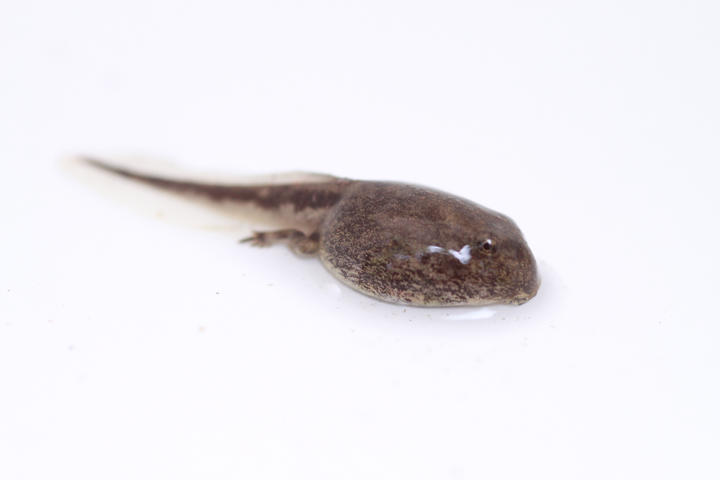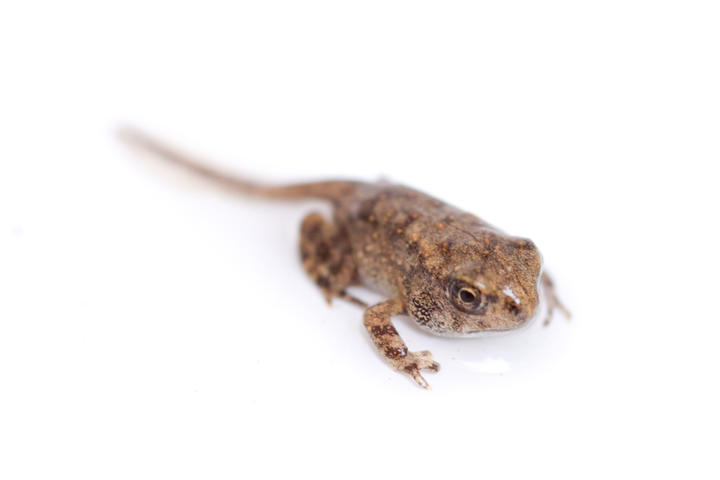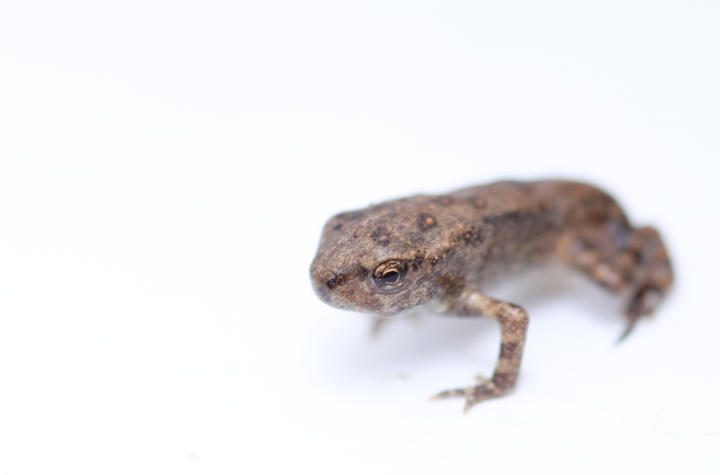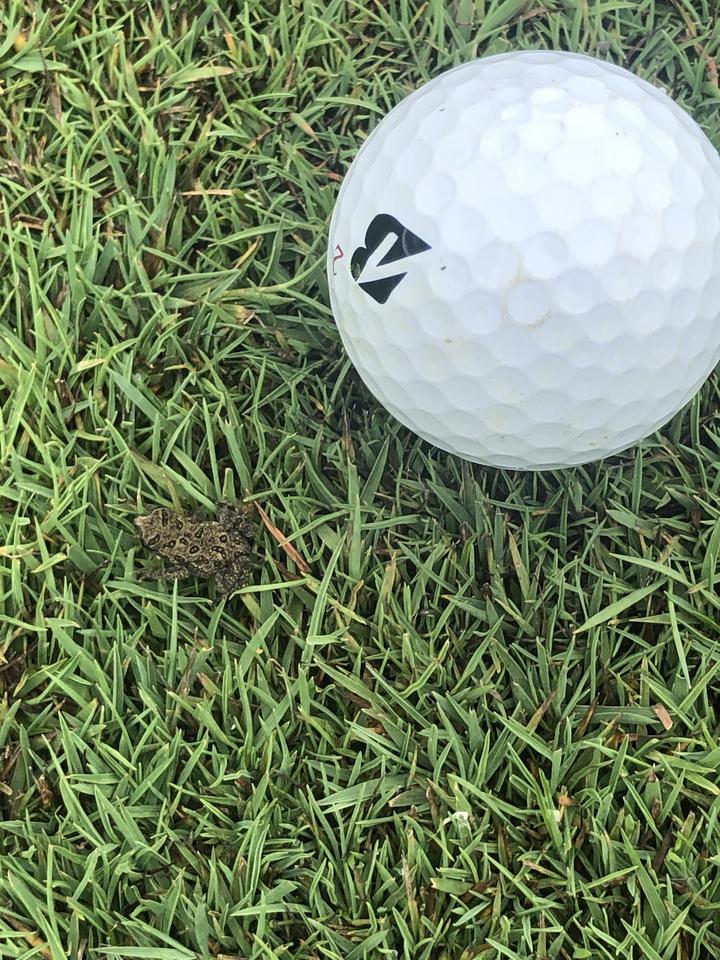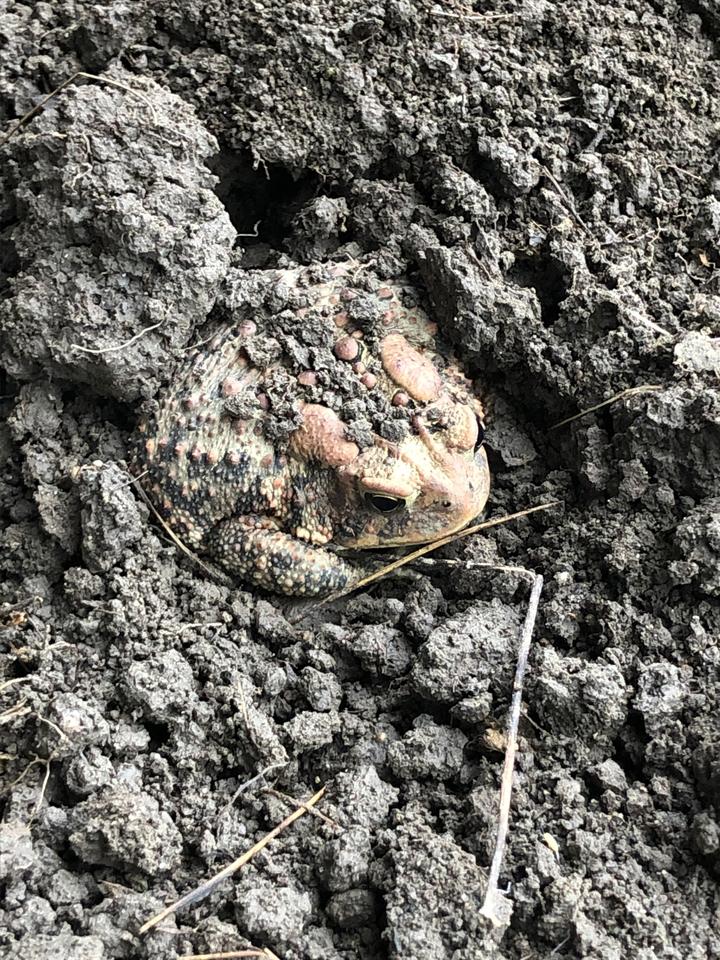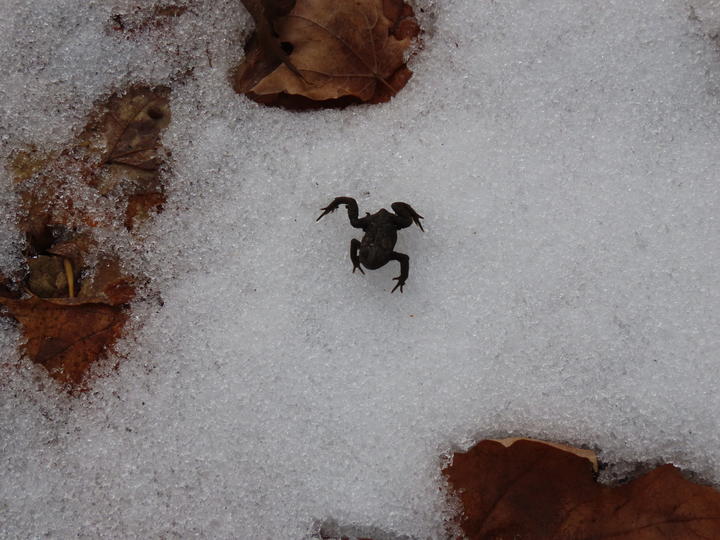More names for this animal
Anishinaabemowin: Obiigomakakii (toad)
Dakota: Natápeḣa (toad)
The Dakota and Anishinaabe were among the earliest people to name Minnesota’s plants and animals, as well as to understand them in relation to Minnesota’s climate and seasons. Those original names are still in use, and several are included on the Season Watch website.
Latin (or scientific name): Anaxyrus americanus (formerly Bufo americanus)
The scientific community has a convention of assigning agreed-upon Latin names to every kind of organism. Using scientific names helps people communicate confidently about the same organism and organize lifeforms based on how closely related they are.
Page contents
About the American toad
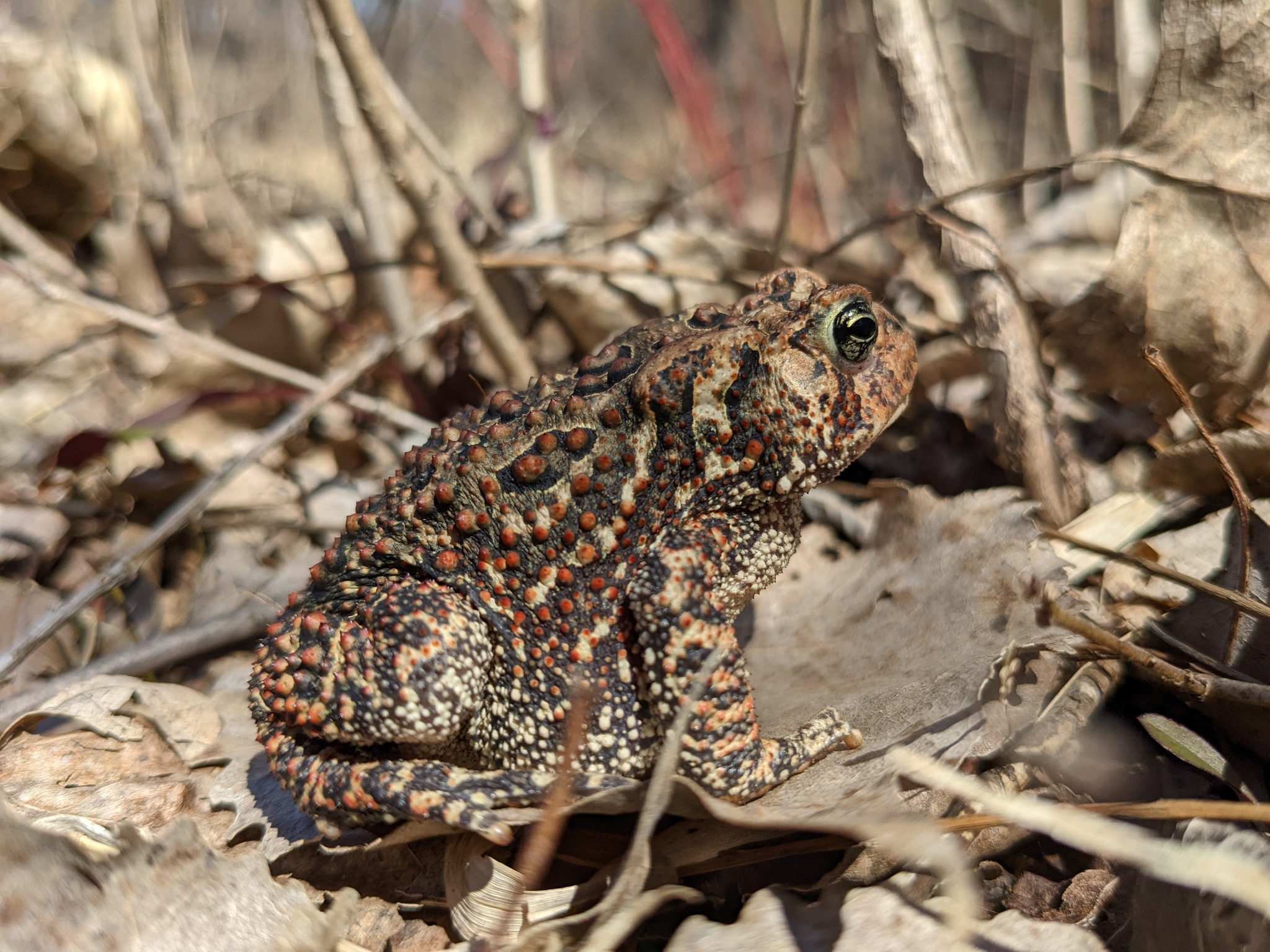
April 21, 2022, Ramsey County, Minnesota
Photo © mchergosky, some rights reserved (CC-BY-NC)
iNaturalist observation
About the American toad
- The American toad is reddish or brown on top, pale underneath, has warts on its back and is approximately two to four inches long.
- During the breeding season (in spring), they can be found in a variety of places such as ditches, river backwaters, streams, swamps, and temporary wetlands.
- As spring transitions to summer, toads can be found farther from water, in places such as woodlands, grasslands, yards and even gardens.
- In winter, the American toad burrows and lives below the frost line.
- Fun fact: Most animals avoid eating American toads due to their bitter taste. However, raccoons will eat the underside to avoid the distasteful back and head.
Visual guide to phenology
Watch for American toads' presence (or absence), abundance, and behaviors at different times of year. Also, pay attention to when young-of-year appear and develop.
Note to observers
This page explains general clues to watch and listen for when observing American toad phenology. However, this page does not explain how to identify this animal or collect data in a standardized way.
- For help with identification, see a field guide or the Minnesota DNR's webpages on reptiles and amphibians.
- For guidance on collecting data, see Nature’s Notebook.
American toads "trilling"
May 15, 2020, Ramsey County, Minnesota
Recording © Adam Herman, some rights reserved (CC-BY-NC), iNaturalist observation
A single individual calling in the foreground
Recording by JPBILLINGSLEYJR
(https://freesound.org/s/469364/)
CC BY 4.0
Graphs and historical data
Note: The Orientation Center provides a map, as well as information on reading graphs; interpreting summary statistics, who collected the data and how; and how to download datasets for independent exploration.
Calling
- Earliest: April 4 (occurred in 2005)
- Average: May 8
- Latest: May 29 (occurred in 1997 and 2002)
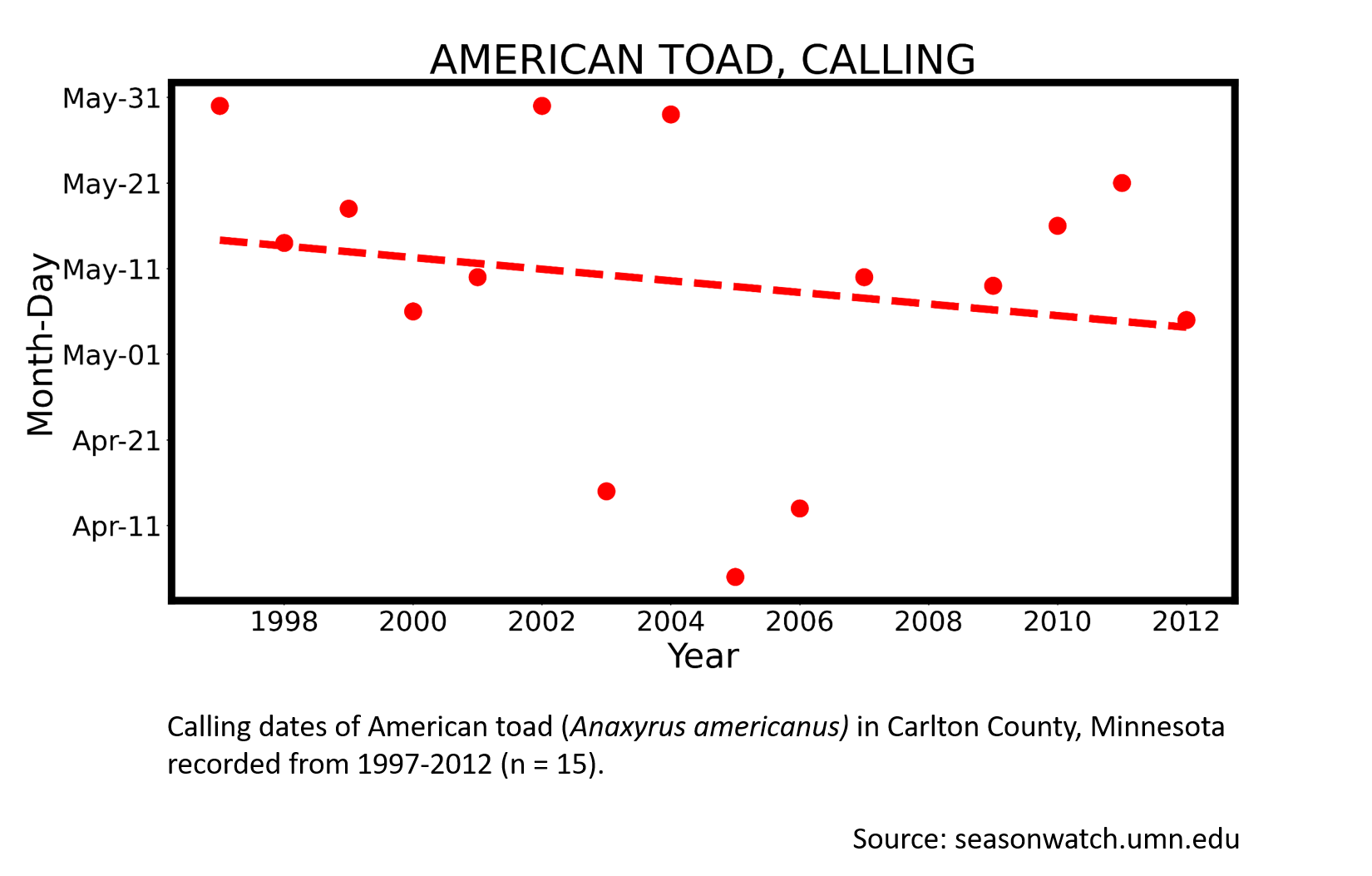
First heard
- Earliest: April 22 (occurred in 2006)
- Average: May 14
- Latest: May 28 (occurred in 2013)
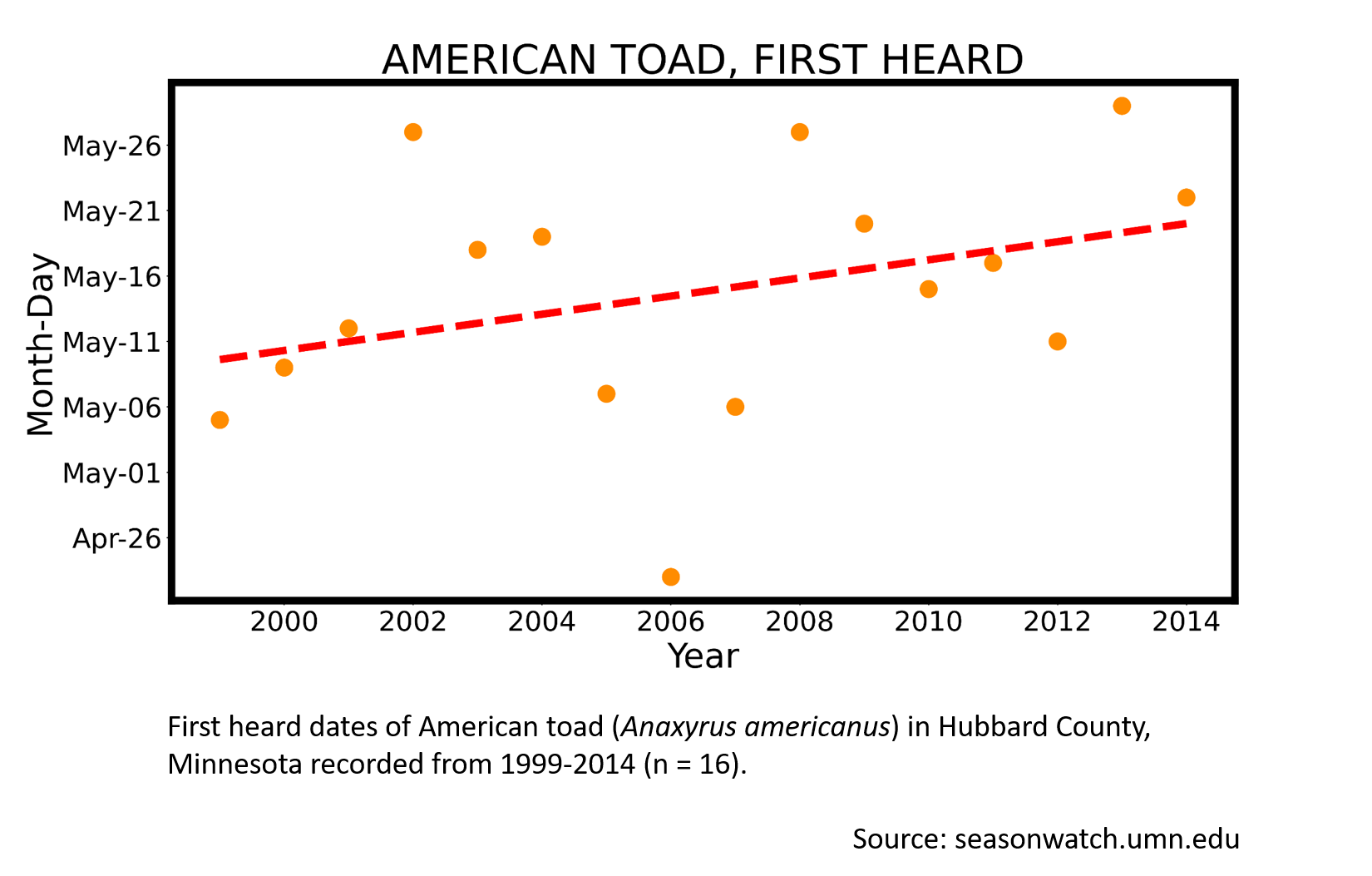
First heard
- Earliest: April 30 (occurred in 2001)
- Average: May 15
- Latest: May 29 (occurred in 2013)
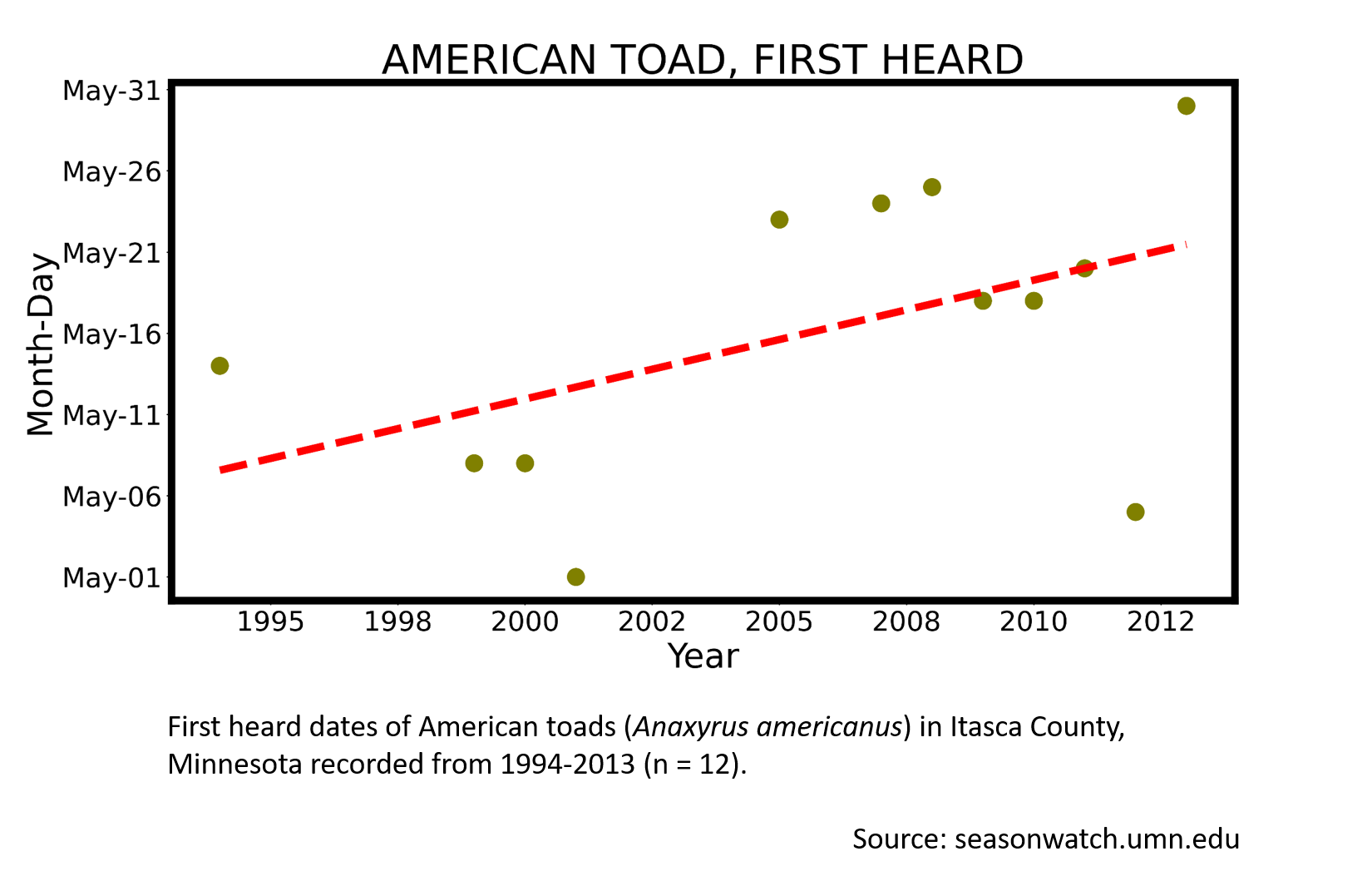
More resources
Keep exploring Season Watch
Keep exploring Season Watch
Co-author: Jayme Hogan, Minnesota Master Naturalist
